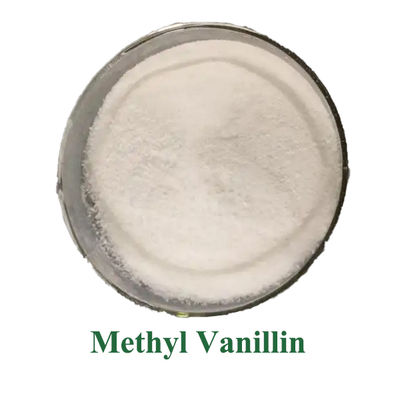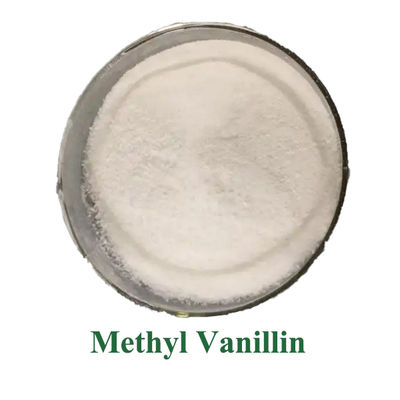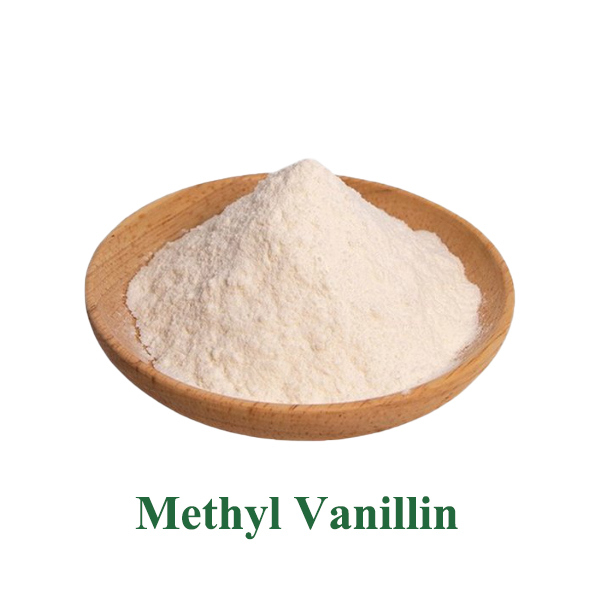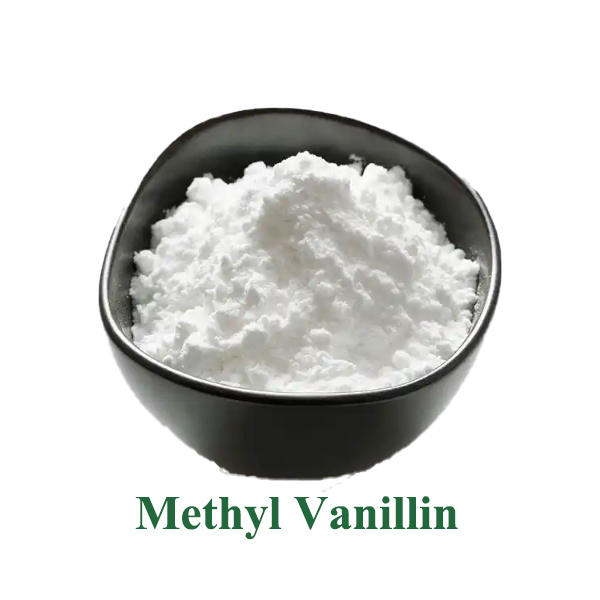
Food-grade methyl vanillin: white to brownish-yellow or bluish-gray needle-like crystals
-
Highlight
food-grade methyl vanillin crystals
,methyl vanillin essential oil
,vanillin needle-like crystals
-
Product NameMethyl Vanillin
-
CAS120-14-9
-
Purity99.9%
-
AppearanceLiquid
-
Shelf Life2 Years
-
MOQ5KG
-
PackingFoil Bag,Bottled,Drum,Carton,Container
-
QualityNatural Raw Materials, Safe And Harmless, No Addition
-
Boiling Point40-43 °C (lit.)
-
Density1.1708 (rough Estimate)
-
EINECS204-373-2
-
Place of OriginShaanxi, China
-
Brand NameBaisfu
-
CertificationMethyl Vanillin
-
Model Number120-14-9
-
Minimum Order Quantity5kg
-
Price17.59USD
-
Packaging DetailsFoil bag,Bottled,Drum,Carton,Container
-
Delivery Time10-15 work days
-
Payment TermsT/T,Western Union,D/P,L/C
-
Supply Ability20,000 kilograms a month
Food-grade methyl vanillin: white to brownish-yellow or bluish-gray needle-like crystals
Methyl vanillin is a synthetic aromatic compound (chemical formula: C₈H₈O₃), a methylated derivative of natural vanillin. It is one of the most widely used synthetic fragrances worldwide. Its core characteristic is its rich, pure vanilla aroma, combined with its stability and cost-effectiveness. It is indispensable in the food and daily chemical industries, serving as a classic fragrance ingredient that combines functionality with affordability.
Chemical Composition: A single chemical substance; commercial products typically have a purity ≥99%.
Physical Properties: At room temperature, it is a white needle-like crystal or powder with a strong, long-lasting vanilla aroma (highly similar to the aroma of natural vanillin). Its melting point is approximately 81-83℃, and its boiling point is approximately 285℃. It is slightly soluble in water, readily soluble in ethanol, oils, and most organic solvents, and is also highly compatible with food ingredients and daily chemical formulations.
Chemical Properties: Excellent stability; it does not easily decompose in neutral or weakly acidic environments; it is heat-resistant (withstanding food baking, frying, and other processing techniques), freeze-thaw resistant, and does not easily oxidize or deteriorate, maintaining its aroma stability over a long period.
| Product Name | Methyl vanillin |
| CAS | 120-14-9 |
| EINECS | 204-373-2 |
| Type | Food Flavors |
| Brand Name | BAISIFU |
| Appearance | Power |
| Shelf Life | 2 years |
| MOQ | 5KG |
| Origan | Shaanxi,China |
| Purity | 99% |
| Packing | Foil bag,Bottled,Drum,Carton,Container |
| Storage | Sealed in dry,Room Temperature |
| density | 1.1708 (rough estimate) |
-
Food and Beverage Sector
Food Flavoring: Widely used in confectionery (chocolate, milk candy, hard candy), baked goods (cakes, biscuits, bread, pastries), ice cream, jelly, yogurt, dairy products, etc., imparting a rich vanilla flavor and enhancing product sweetness and sensory appeal.
Beverage Blending: Used in carbonated beverages, fruit juices, dairy beverages, coffee, tea beverages, and alcoholic beverages (such as whiskey, cocktails), enriching flavor layers and masking bitterness or chemical odors from raw materials.
Food Flavor Blending: As a core vanilla ingredient, used in blending cream, chocolate, fruit, and other complex flavorings to meet various food production needs.
-
Daily Chemicals and Fragrance Sector
Personal Care Products: Added to shampoos, shower gels, body lotions, hand creams, laundry detergents, fabric softeners, etc., imparting a fresh and elegant vanilla scent, improving the user experience, and masking chemical odors.
Fragrance Products: Used in air fresheners, scented candles, reed diffusers, car air fresheners, etc., featuring a warm and soothing vanilla scent to create a comfortable atmosphere.
Makeup products: Apply in small amounts to lipsticks, lip glosses, foundations, perfumes, etc., to impart a subtle vanilla scent and enhance the product's luxurious feel and comfort.
- Pure Aroma, Highly Compatible:The vanilla aroma is rich, natural, and free of off-flavors, accurately mimicking the natural vanilla flavor. It serves as the "benchmark flavoring" for vanilla fragrances, usable alone or blended with other flavorings to enhance aroma complexity, suitable for various product scenarios.
-
Excellent Physicochemical Properties, Outstanding Practicality:
Strong Stability:Compared to natural vanillin (susceptible to environmental degradation), methyl vanillin is more temperature and acid/alkali resistant, exhibiting less aroma loss during various processing steps and maintaining its aroma throughout the product's shelf life.Good Solubility: Easily soluble in various solvents and raw material systems, it disperses evenly in food and daily chemical products without affecting the original texture (e.g., food taste, skin feel).
Significant Cost Advantage, Stable Supply:The artificial synthesis process is mature (obtained through chemical reactions using guaiacol, glyoxylic acid, etc. as raw materials). Raw materials are readily available and produced in large quantities. The price is only a fraction of that of natural vanillin (extracted from vanilla beans), offering extremely high cost-effectiveness and meeting the needs of large-scale industrial production.
- High safety and strong compliance: It complies with the food additive (such as GB 2760 and FDA standards) and daily chemical fragrance usage regulations of most countries and regions around the world. When used within the prescribed dosage, it is non-toxic, non-irritating, and non-allergenic to the human body, and has a very wide range of applications.





Overall Rating
Rating Snapshot
The following is the distribution of all ratingsAll Reviews